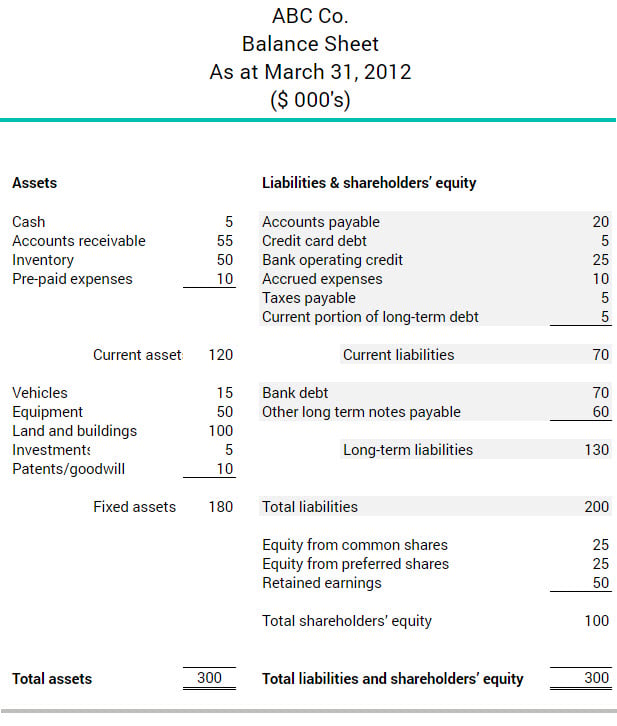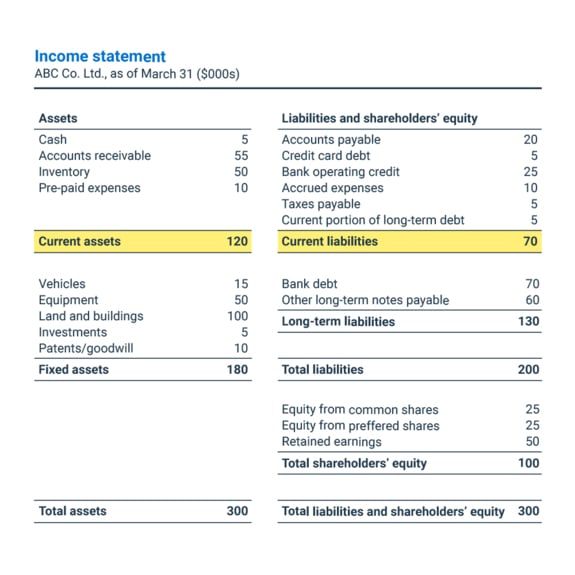Liabilities
Liabilities are the legal debts a company owes to third-party creditors. They can include accounts payable, notes payable and bank debt.
All businesses must take on liabilities in order to operate and grow. A proper balance of liabilities and equity provides a stable foundation for a company. If it has too much debt, payments can be difficult to make should sales slow. It might also prevent the company from taking on additional debt that it could use to take advantage of market opportunities. This mix is visible on the balance sheet.
There are two main categories of liability:
- Current liabilities that must be paid within 12 months
- Long-term liabilities payable beyond 12 months
Together, these indicate everything the company owes. Companies must pay their liabilities according to whatever terms have been agreed on. Creditors have the legal right to collect on these debts if a company does not repay them.
More about liabilities
The example below shows ABC Co.’s mix of liabilities and shareholder equity. It has $2 of debt for every $1 of equity—which is at the high end of a proper balance.

